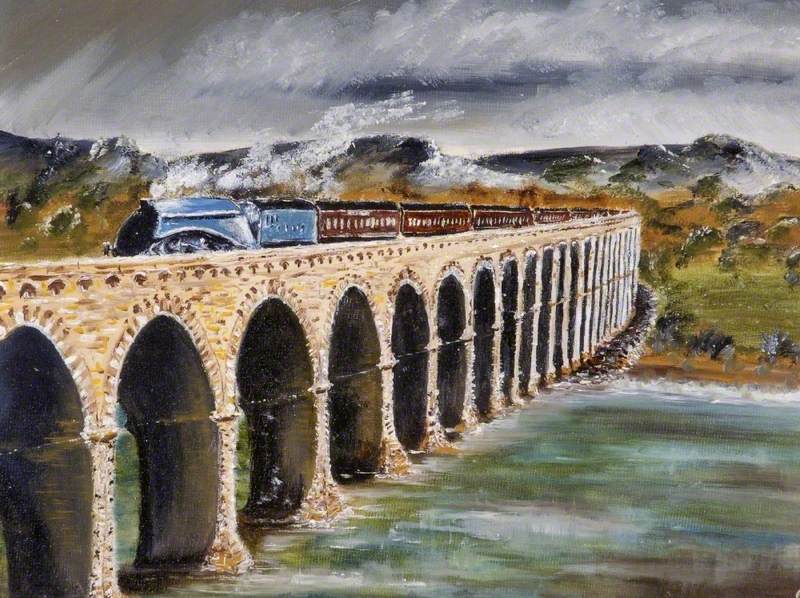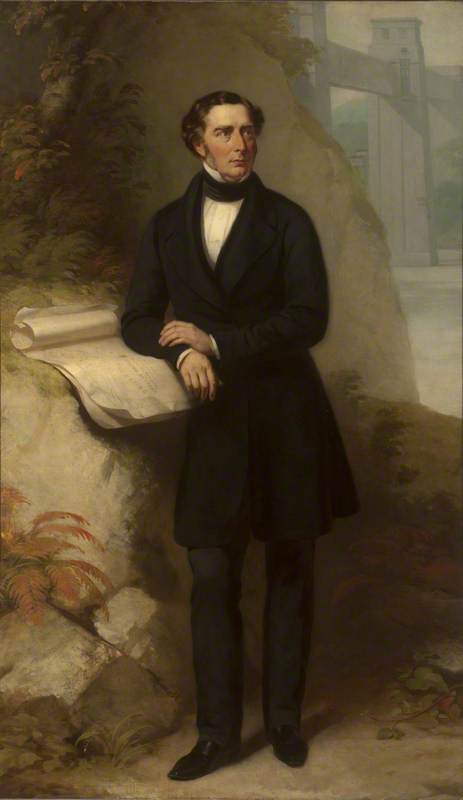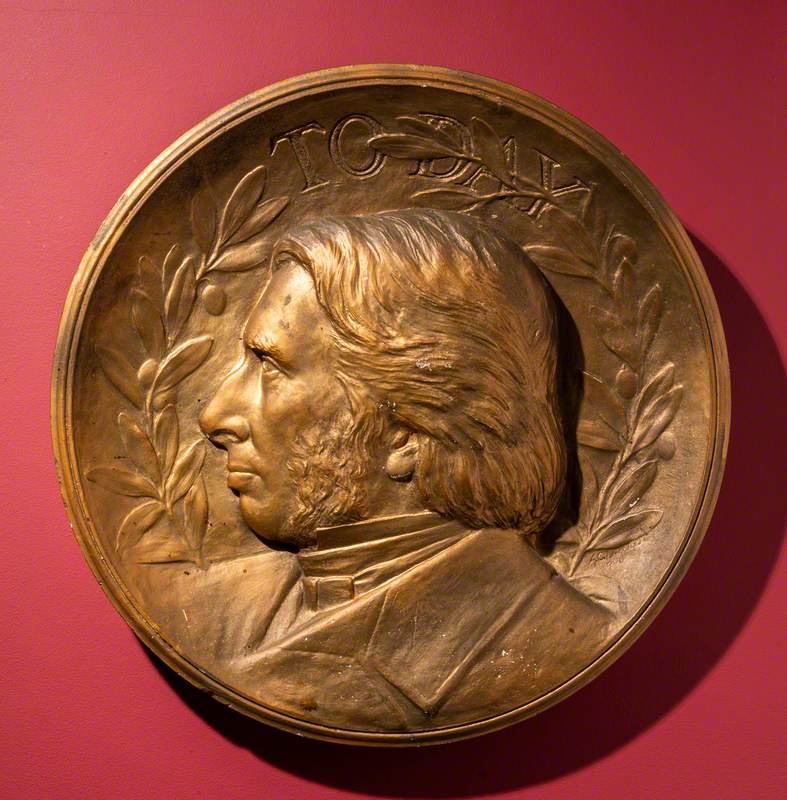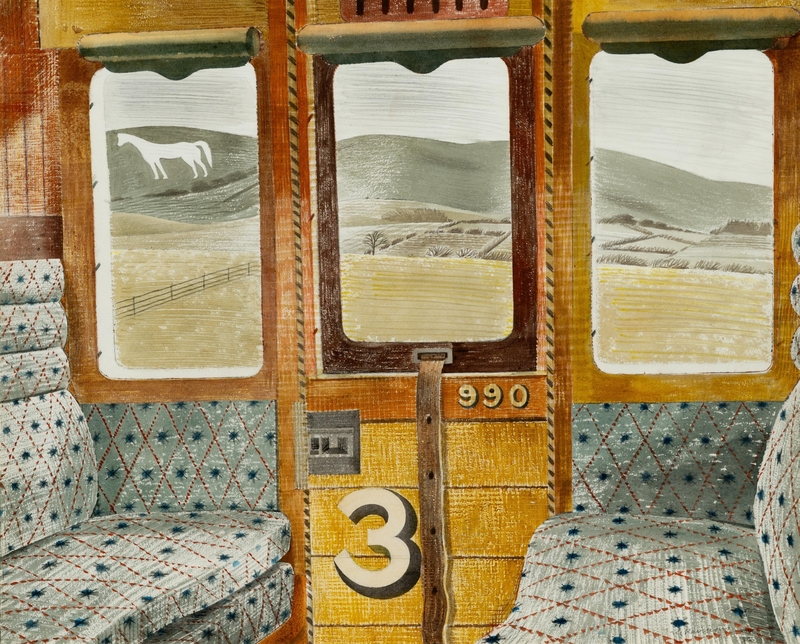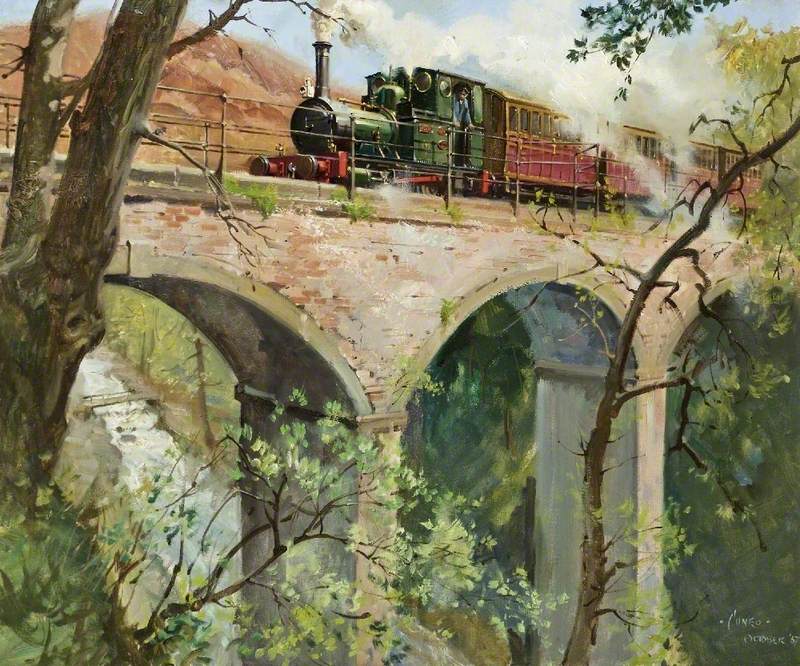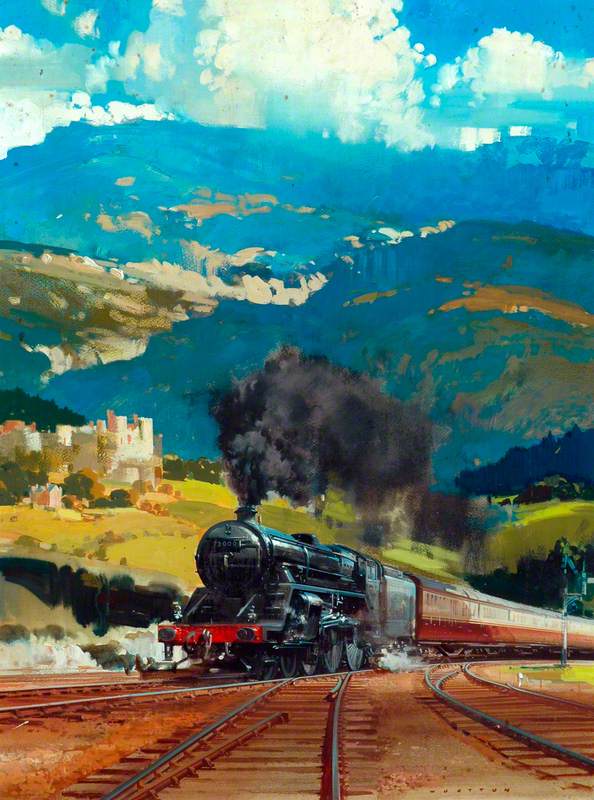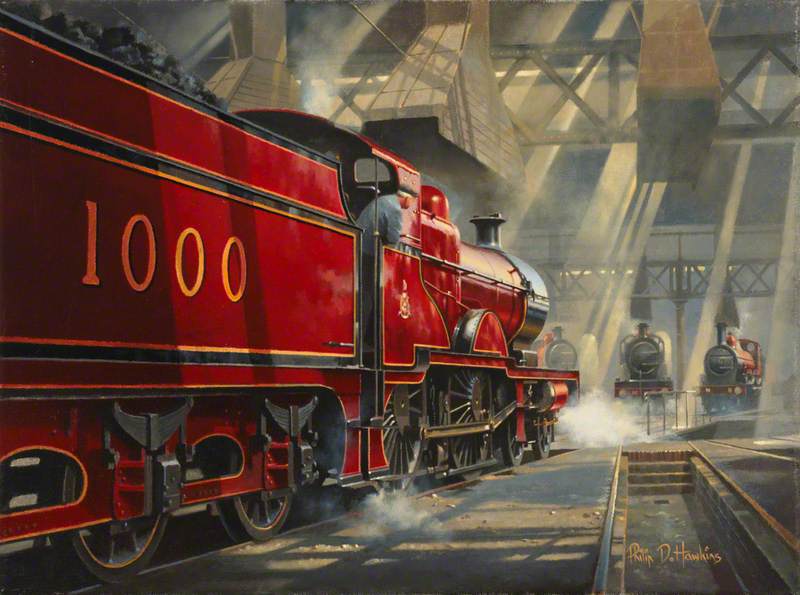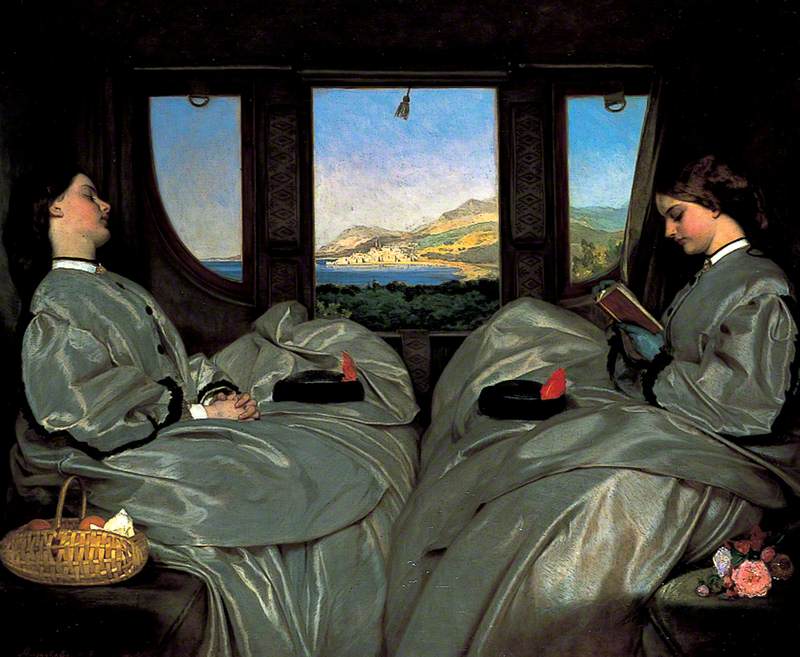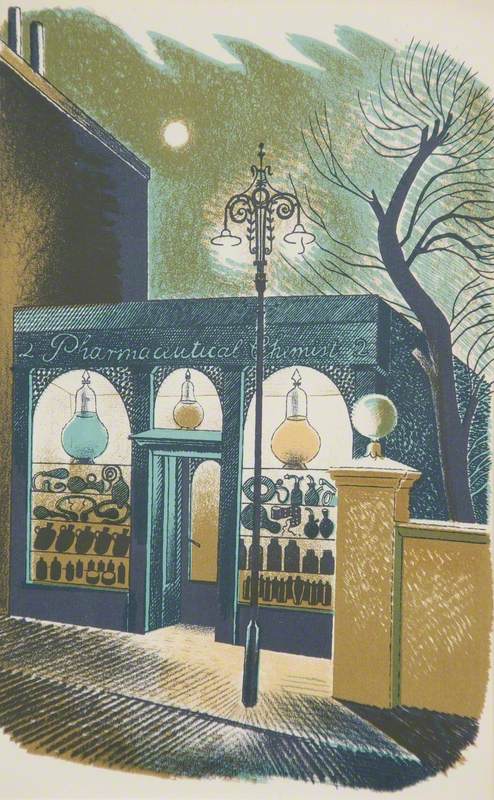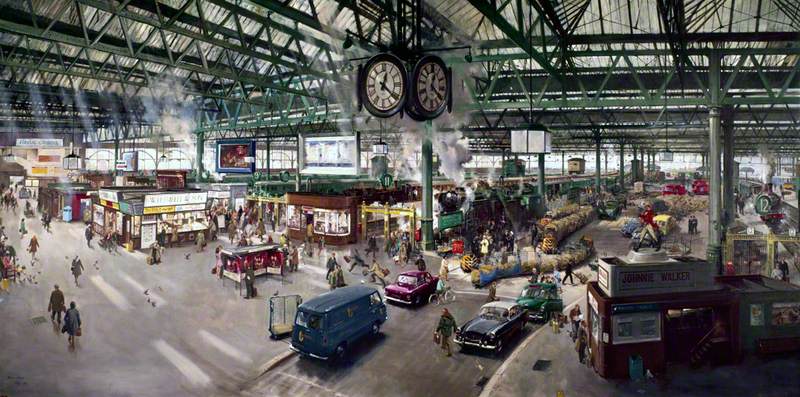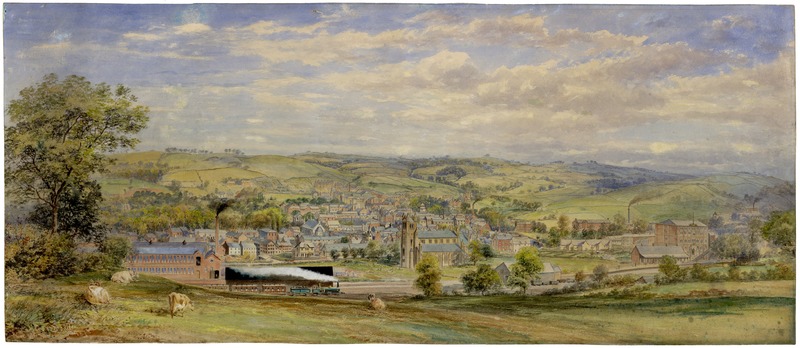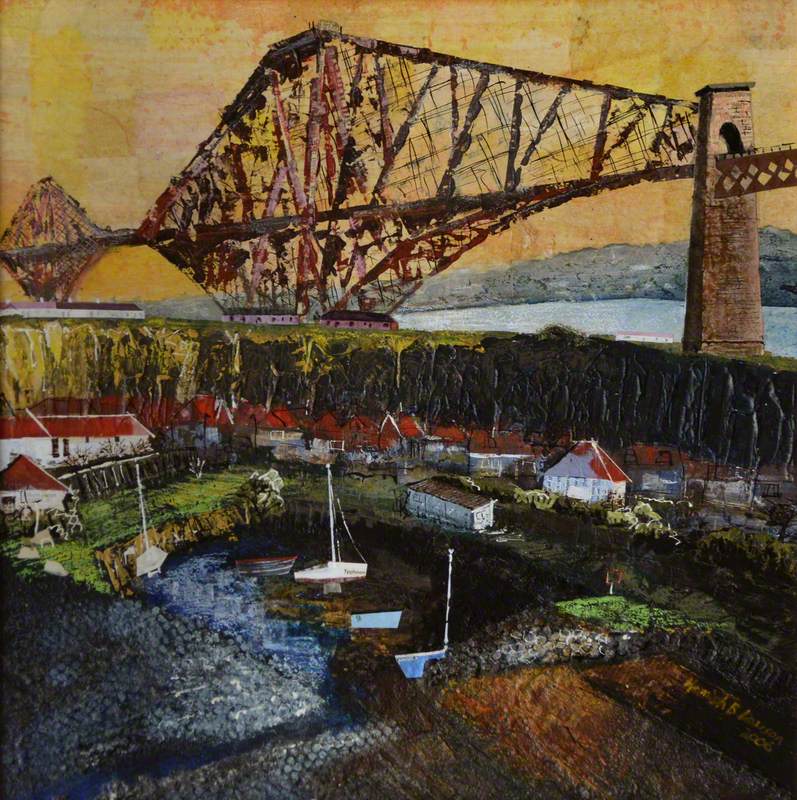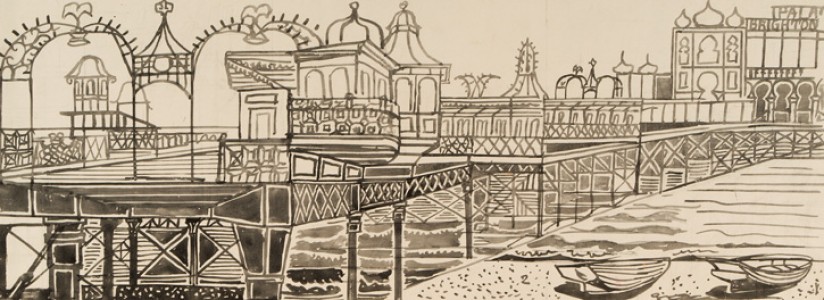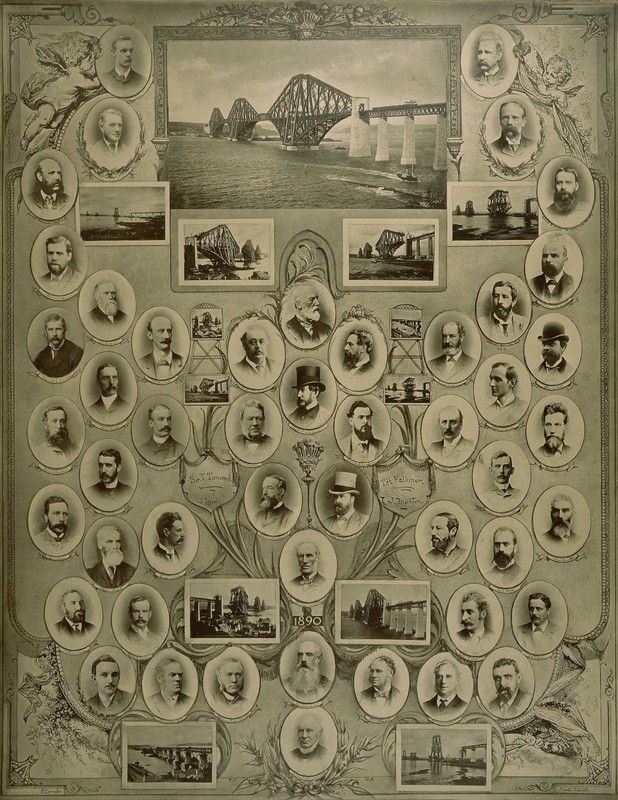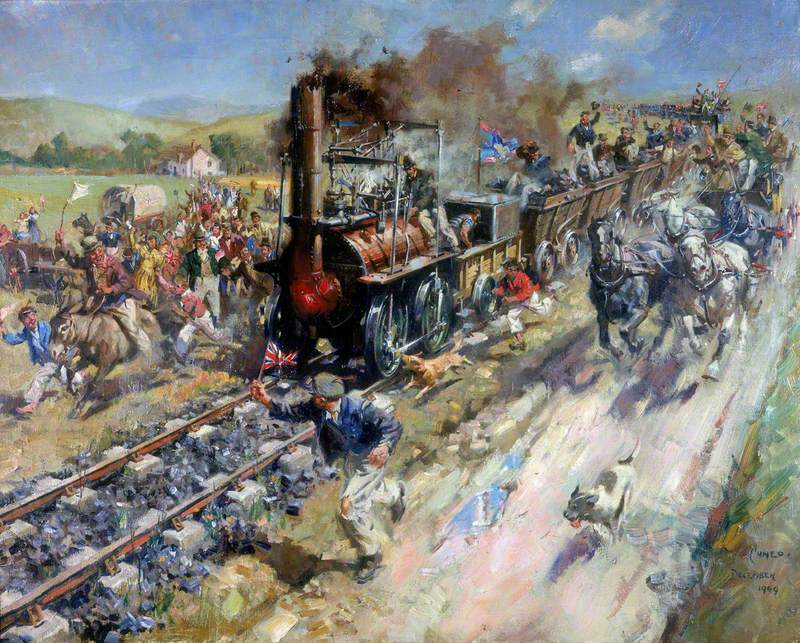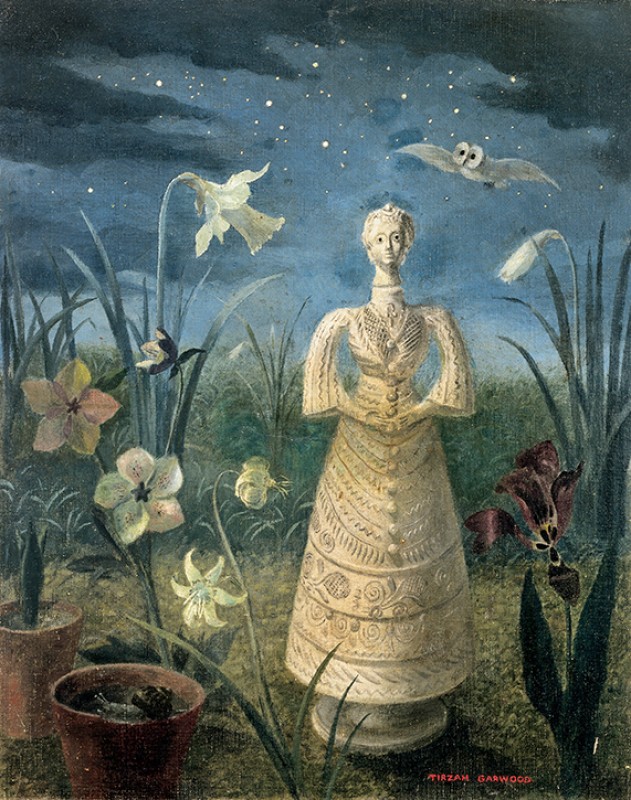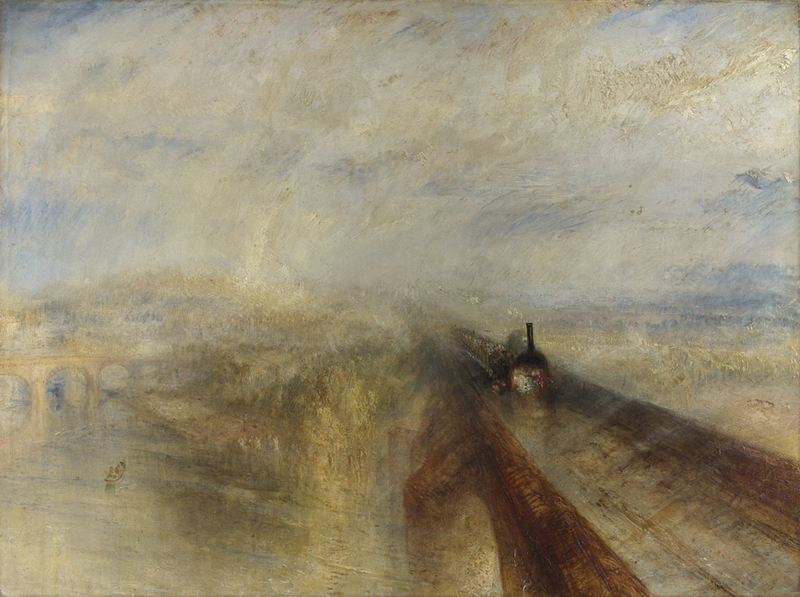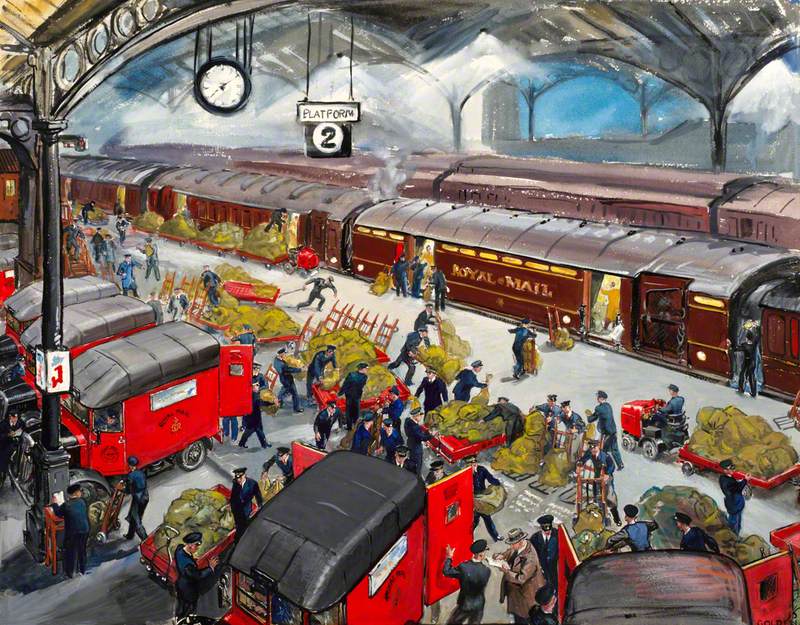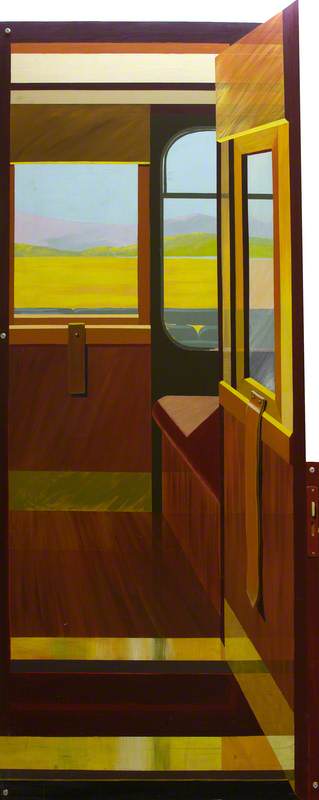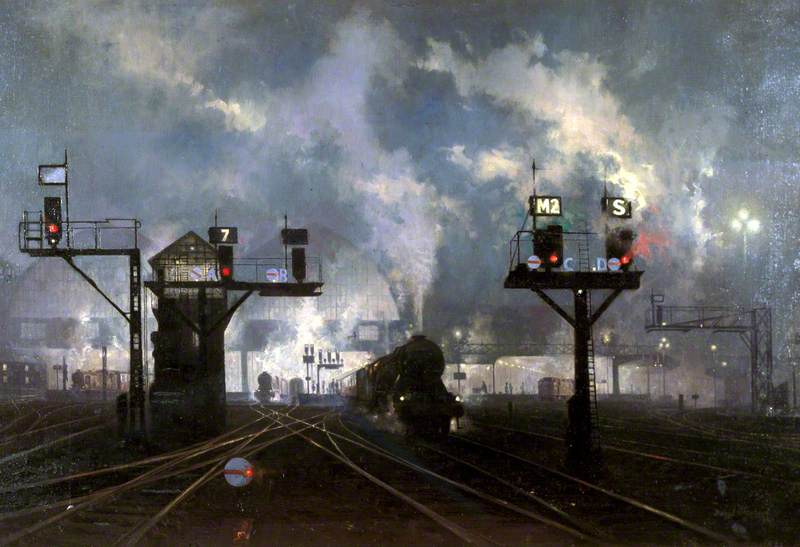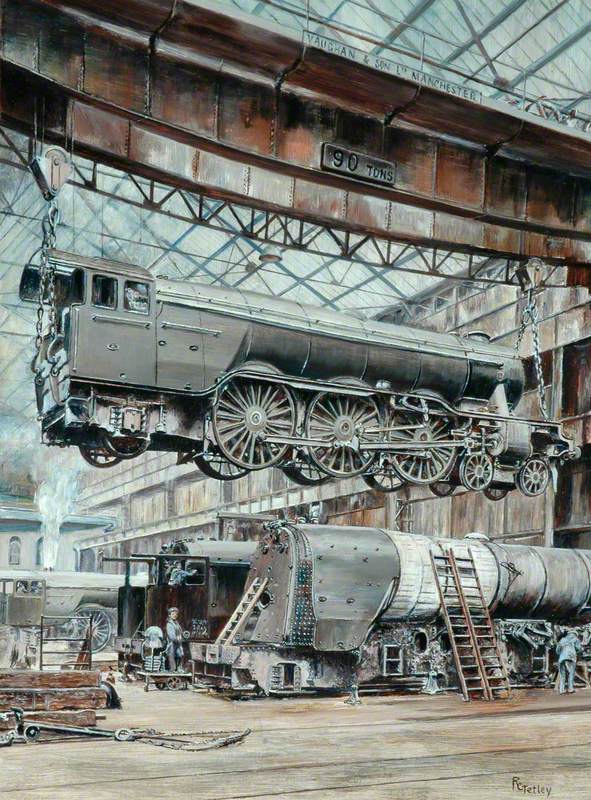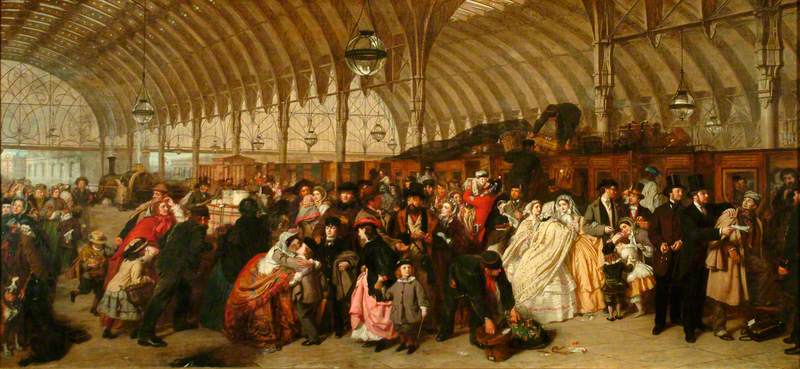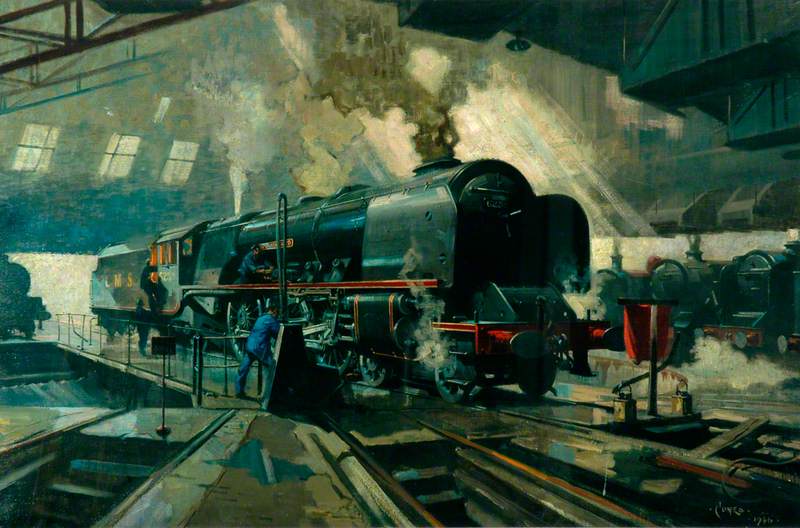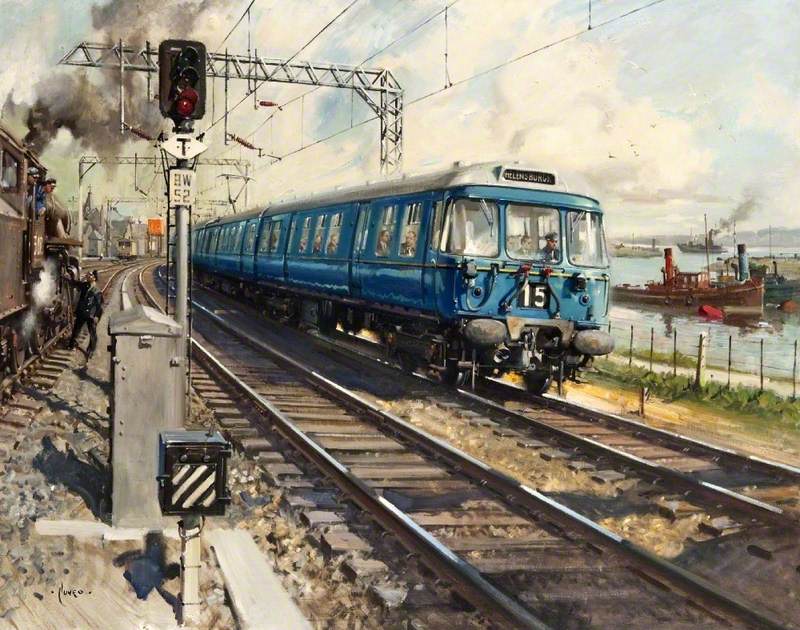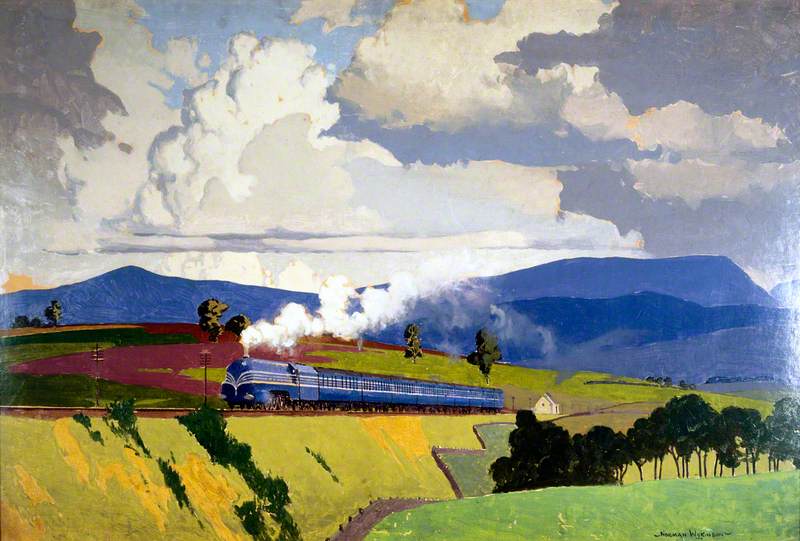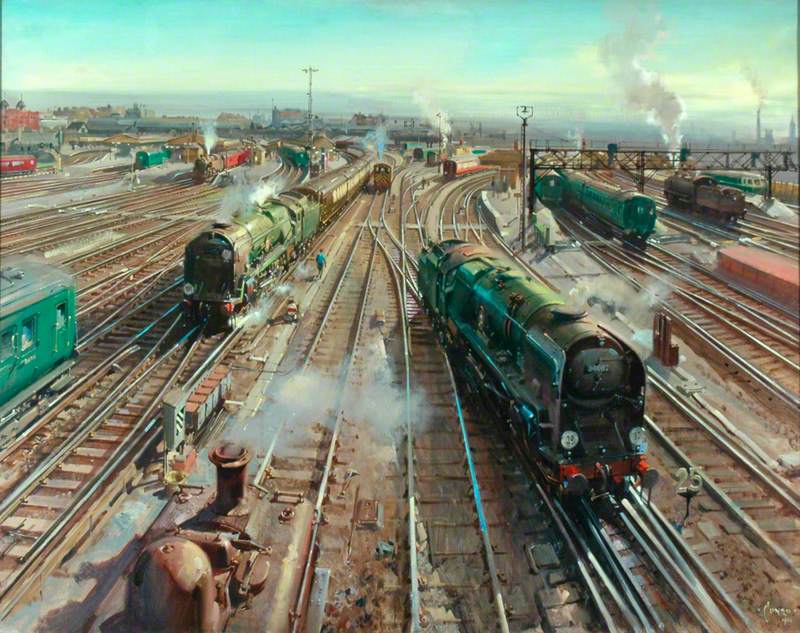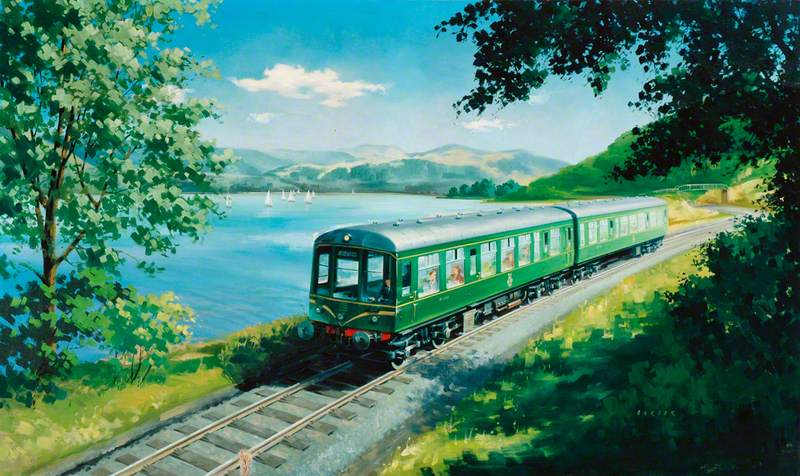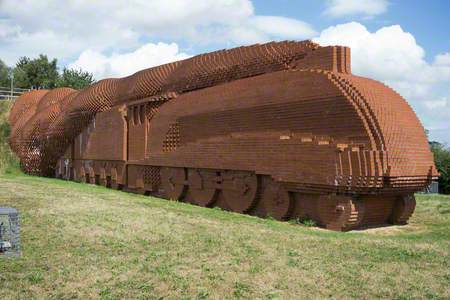This artwork is one of the top 20 UK railway artworks voted for by the public as part of Railway 200.
Ann Emily Carr's charming landscape shows Mallard, famous for having achieved the highest recorded speed (126 mph) of any steam locomotive, crossing the Royal Border Bridge just south of Berwick upon Tweed. The details are loosely painted, but the locomotive is unmistakably depicted in the garter blue livery it received when new in 1938, and the carriages have the look of the varnished teak finish adopted by the parent company, the London & North Eastern Railway.
The railway historian might therefore suggest a date in the late 1930s, but the impressionistic paintwork and the exaggerated skyline suggest that the artist (born 1929) did not mean to create a closely accurate historical image. David Mach's 1997 sculpture Train at Darlington, County Durham, is another artwork that simplifies the streamlined outlines of this most distinctive locomotive type, the A4 'Pacifics' designed by Sir Nigel Gresley.
The York, Newcastle & Berwick Railway company began building the bridge in 1847. Completion came in 1850, three years after the railway had begun running trains to Tweedmouth at the bridge's southern end. In the interim horse-buses carried passengers across the old road bridge, a little way downstream. At Berwick the line northward to Edinburgh was already complete, so the opening of the Royal Border Bridge allowed an unbroken run between London and the Scottish capital.
Royal Border Bridge, Berwick upon Tweed
The distinction between bridges and viaducts is inexact, but 'bridge' tends to be preferred where multiple-arched structures cross rivers or other bodies of water. In this case, the barrier was the River Tweed, which accounts for eleven of the bridge's 28 arches. Each arch spans 61 feet 6 inches (18.75 metres), and the run of regular semi-circular openings is topped by a projecting cornice composed of small arches: an aestheticising touch on the part of the designer, the famous railway engineer Robert Stephenson (1803–1859).
The Royal Border Bridge remains in use to this day, a testament to the durability and quality of the railway pioneers' work.
At the time of its completion, the bridge was the largest structure of its type in Britain. By that date, the railway network had spread into most regions of the country, and grand arched viaducts had lost some of their initial impact as innovations; historians have noted that the market for topographical prints of railway subjects tailed off from the mid-nineteenth century.
For some, including the influential critic John Ruskin, railways actually represented an enemy of artistic endeavour.
In 1880 Ruskin added a footnote to the opening sentence of his celebrated treatise Seven Lamps of Architecture ('Architecture is the art which so disposes and adorns the edifices raised by man... that the sight of them may contribute to his mental health, power and pleasure'), as follows: 'This separates architecture from a wasp's nest, a rat hole and a railway station.'
But at Berwick, the railway crossing had the advantage of composing nicely with the seventeenth-century road bridge, which remained a favourite subject for artists, and the two were sometimes captured together.
Principal Arch, Old Bridge, Berwick-on-Tweed
1922
Dorothy W. Moore (1897–1973) 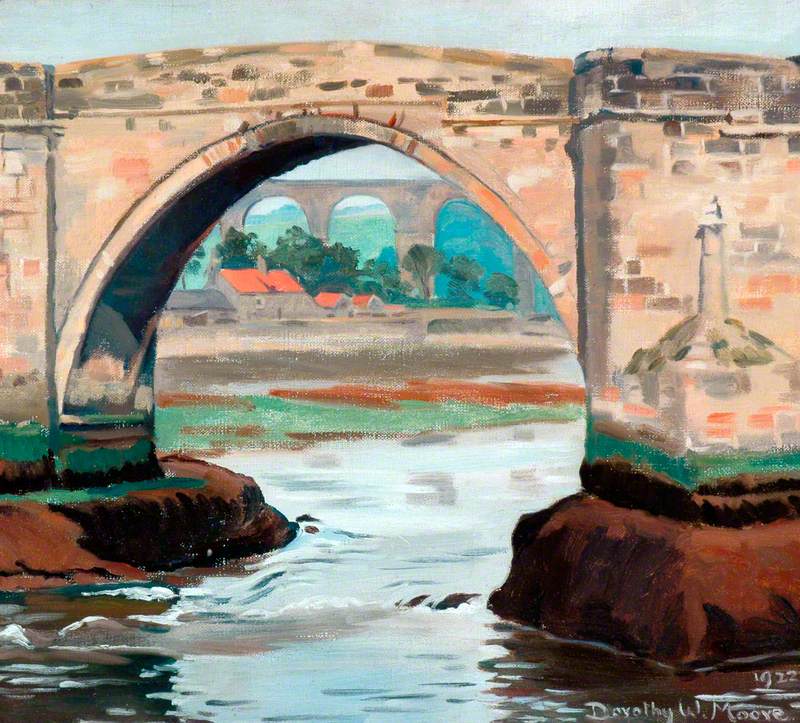
Here Dorothy Moore uses an arch of the road bridge to frame a section of Robert Stephenson's railway viaduct – a view that is no longer possible, after an additional road bridge of reinforced concrete was built between the two many-arched stone crossings in the 1920s.
Simon Bradley, writer
This content was funded by Railway 200
About Railway 200
Railway 200 is a cross-industry, UK Government-backed, partner-led celebration of the 200th anniversary of the birth of the modern railway, commemorating the opening by George Stephenson of the Stockton and Darlington Railway in the North East of England in 1825, a journey that changed the world forever. It explores the past, present and future of rail, and how it has shaped our lives and livelihoods. Numerous activities and events are planned throughout 2025, many of which are listed at www.railway200.co.uk
